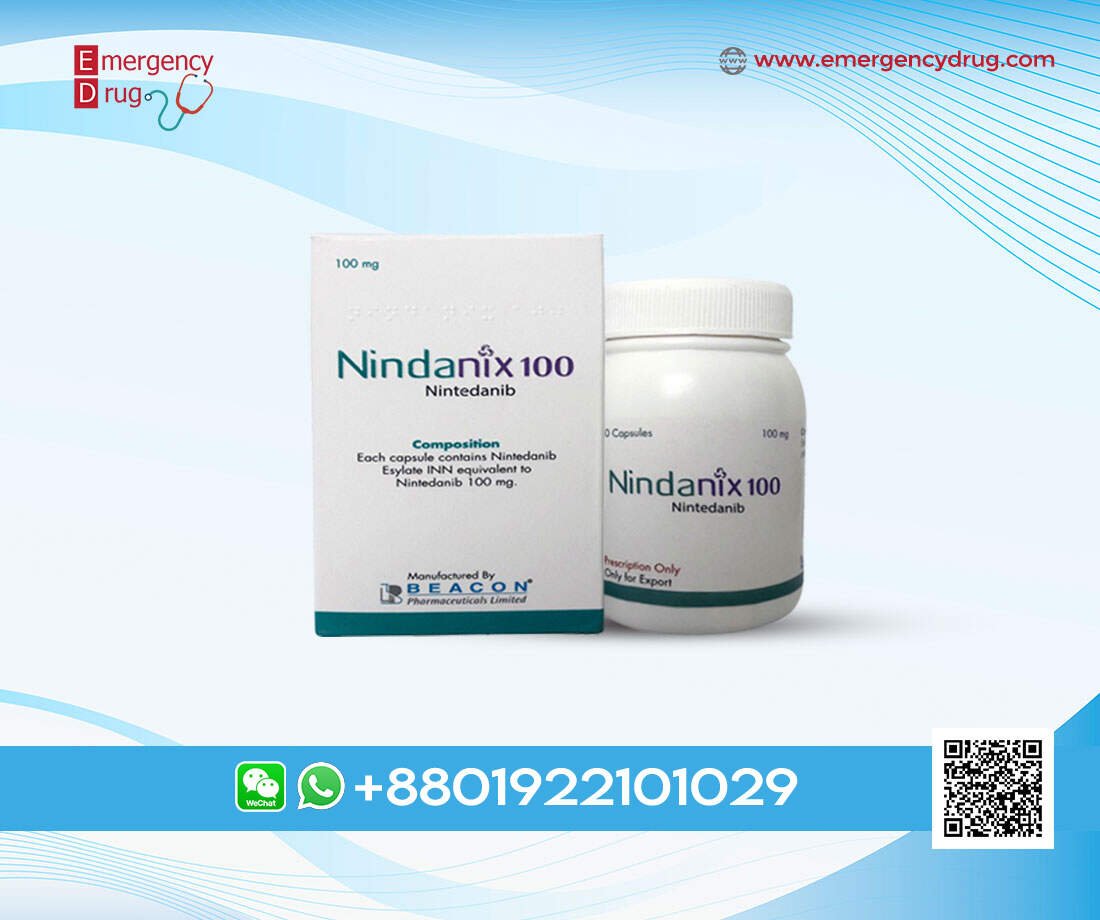
Axinix (Axitinib) 5 MG
Price: $190.00
Product Feature:
| Manufacturer | : Beacon Pharma Ltd. |
| Indication | : Renal Cell Carcinoma |
| Formulation | : Tablet |
| Strength | : 5 mg |
| Quantity | : 60 Tablets |
| Storage | : Below 30°C |
| Registrations | : Export Only |


Description
INDICATION
Axinix 5 mg is indicated for treating advanced Renal Cell Carcinoma (RCC) after failure of one prior systemic therapy.
Axitinib use to treatment of advanced renal cell carcinoma (RCC, a type of cancer that begins in the cells of the kidneys) in people who not to treated successfully with another medication. Axitinib use in combination with avelumab (Bavencio) or pembrolizumab (Keytruda) to treat advanced renal cell carcinoma. Axitinib like a class of medications call kinase inhibitors. It blocks the action of an abnormal protein that signals cancer cells to multiply. This prevent of slow or stop the spread of cancer cells.
Pharmacology
Dosage & Administration
If the patient vomits or misses a dose, an additional dose should not taken. The next prescribed dose should be taken at the usual time. Dose Modification Guidelines: Dose increase or reduction recommended base on individual safety and tolerability. Over the course of treatment, patients who tolerate Axitinib for at least two consecutive weeks with no adverse reactions > Grade 2 (according to the Common Toxicity Criteria for Adverse Events), are normotensive, and are not receiving anti-hypertension medication, may their dose increase. When a dose increase from 5 mg twice daily recommended, the Axitinib dose may be increased to 7 mg twice daily, and further to 10 mg twice daily using the same criteria. Over the course of treatment, management of some adverse drug reactions may require temporary interruption or permanent discontinuation and/or dose reduction of Axitinib therapy. If dose reduction from 5 mg twice daily require, the recommend dose is 3 mg twice daily. If additional dose reduction require, the recommend dose is 2 mg twice daily.
Interaction
Data indicate that Axinix metaboliz primarily by CYP3A4/5 and, to a lesser extent, CYP1A2, CYP2C19, and uridine diphosphate-glucuronosyltransferase (UGT) 1A1.
CYP3A4/5 Inhibitors: Co-administration of ketoconazole, a strong inhibitor of CYP3A4/5, increase the plasma exposure of Axinix in healthy volunteers. Co-administration of Axinix with strong CYP3A4/5 inhibitors should avoid. Grapefruit or grapefruit juice may also increase axitinib plasma concentrations and should avoid. Selection of concomitant medication with no or minimal CYP3A4/5 inhibition potential recommend. If a strong CYP3A4/5 inhibitor must co-administer, the Axinix dose reduce.
Inducers CYP3A4/5: Co-administration of rifampin, a strong inducer of CYP3A4/5, reduce the plasma exposure of Axinix in healthy volunteers. Co-administration of Axinix with strong CYP3A4/5 inducers (e.g., rifampin, dexamethasone, phenytoin, carbamazepine, rifabutin, rifapentin, phenobarbital, and St. John’s wort) should avoid. Selection of concomitant medication with no or minimal CYP3A4/5 induction potential recommend. Moderate CYP3A4/5 inducers (e.g., bosentan, efavirenz, etravirine, modafinil, and nafcillin) may also reduce the plasma exposure of axitinib and should avoid if possible.
Side Effects
Pregnancy & Lactation
Pregnancy Category D. Axinix can cause fetal harm when administered to a pregnant woman base on its mechanism of action. There are no adequate and well-controlled studies in pregnant women using Axitinib. In developmental toxicity studies in mice, axitinib was teratogenic, embryotoxic and fetotoxic at maternal exposures that were lower than human exposures at the recommended clinical dose.
Women of childbearing potential should advised to avoid becoming pregnant while receiving Axinix . If this drug use during pregnancy, or if a patient becomes pregnant while receiving this drug, the patient apprise of the potential hazard to the fetus
Nursing Mothers: It is not known whether Axinix excrete in human milk. Because many drugs excrete in human milk and because of the potential for serious adverse reactions in nursing infants from Axitinib, a decision made whether to discontinue nursing or to discontinue the drug, taking into account the importance of the drug to the mother.
Precautions & Warnings
Use in Special Populations
Hepatic Impairment: The systemic exposure to Axinix higher in subjects with moderate hepatic impairment (Child-Pugh class B) compared to subjects with normal hepatic function. A dose decrease recommended when administering Axitinib to patients with moderate hepatic impairment (Child-Pugh class B). Axinix has not studied in patients with severe hepatic impairment (Child-Pugh class C)
Renal Impairment: No dedicated renal impairment trial for Axinix has conducted. Based on the population pharmacokinetic analyses, no significant difference in axitinib clearance observed in patients with pre-existing mild to severe renal impairment (15 mL/min ≤ ClCr < 89 mL/min). No starting dose adjustment need for patients with pre-existing mild to severe renal impairment. Caution should use in patients with end-stage renal disease (ClCr< 15 mL/min).
Pediatric Use: The safety and efficacy of Axinix in pediatric patients have not studied.
Geriatric Use: No dosage adjustment require in elderly patients.
For more Oncology medicine, visit our SHOP









